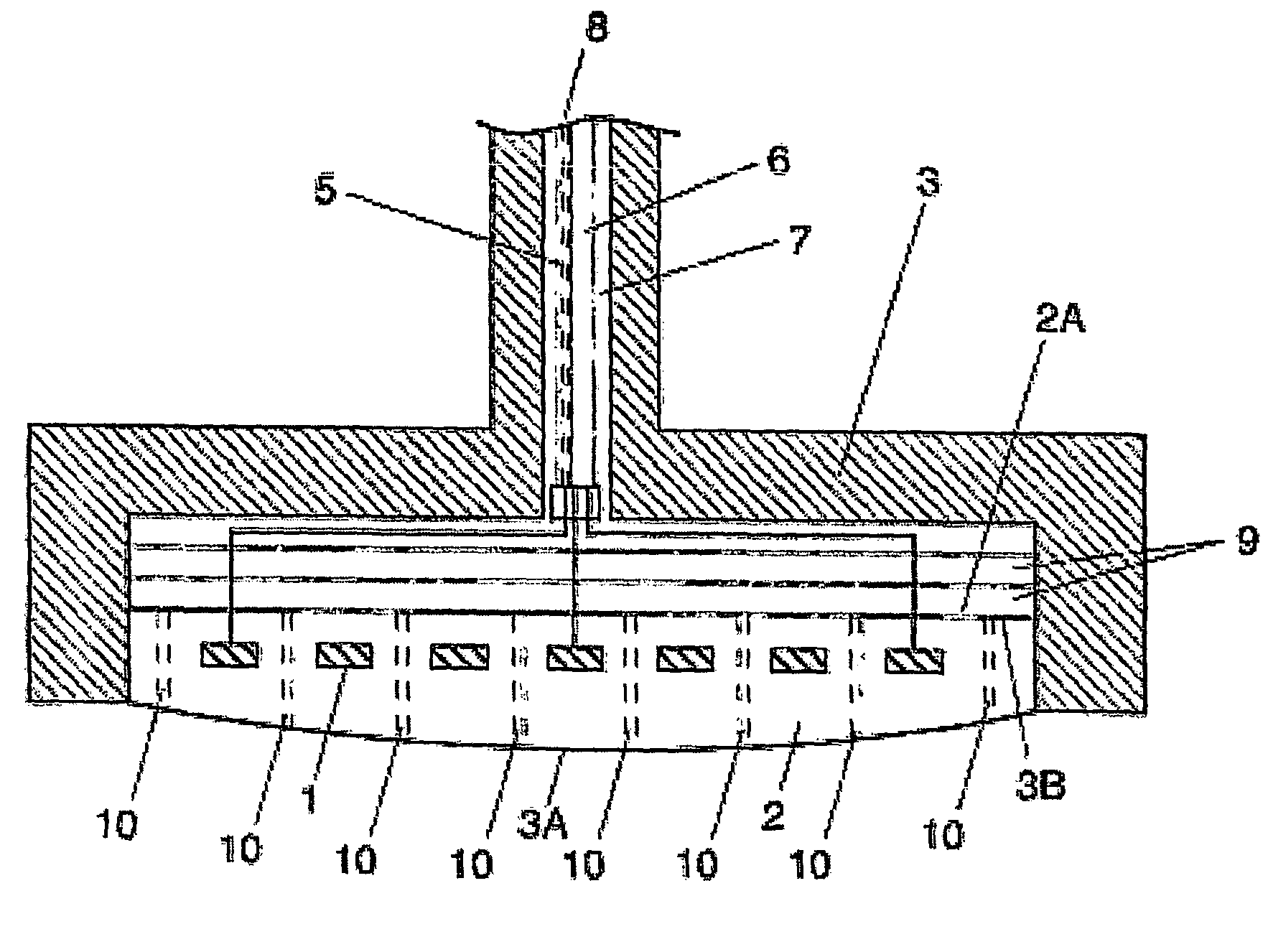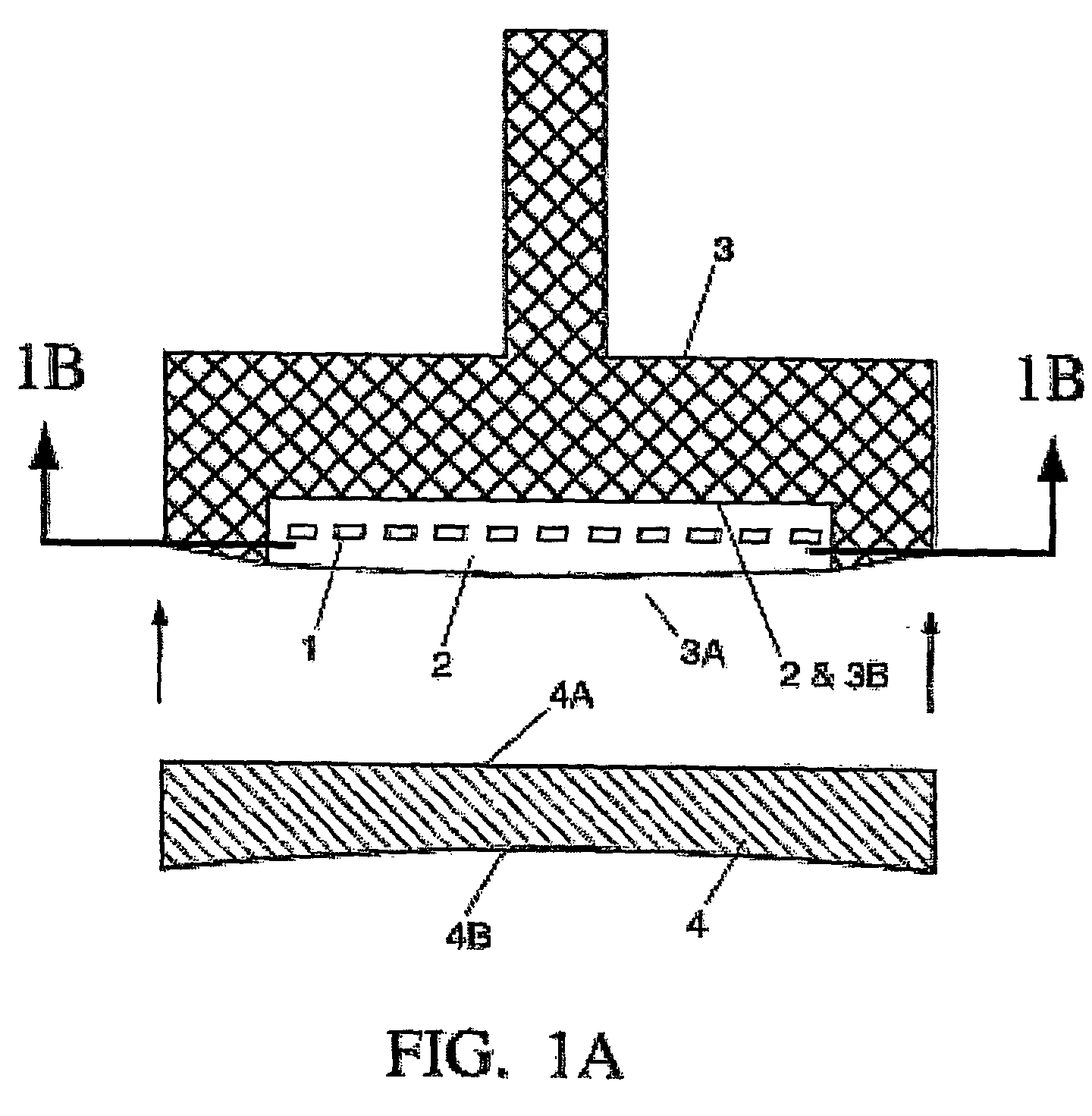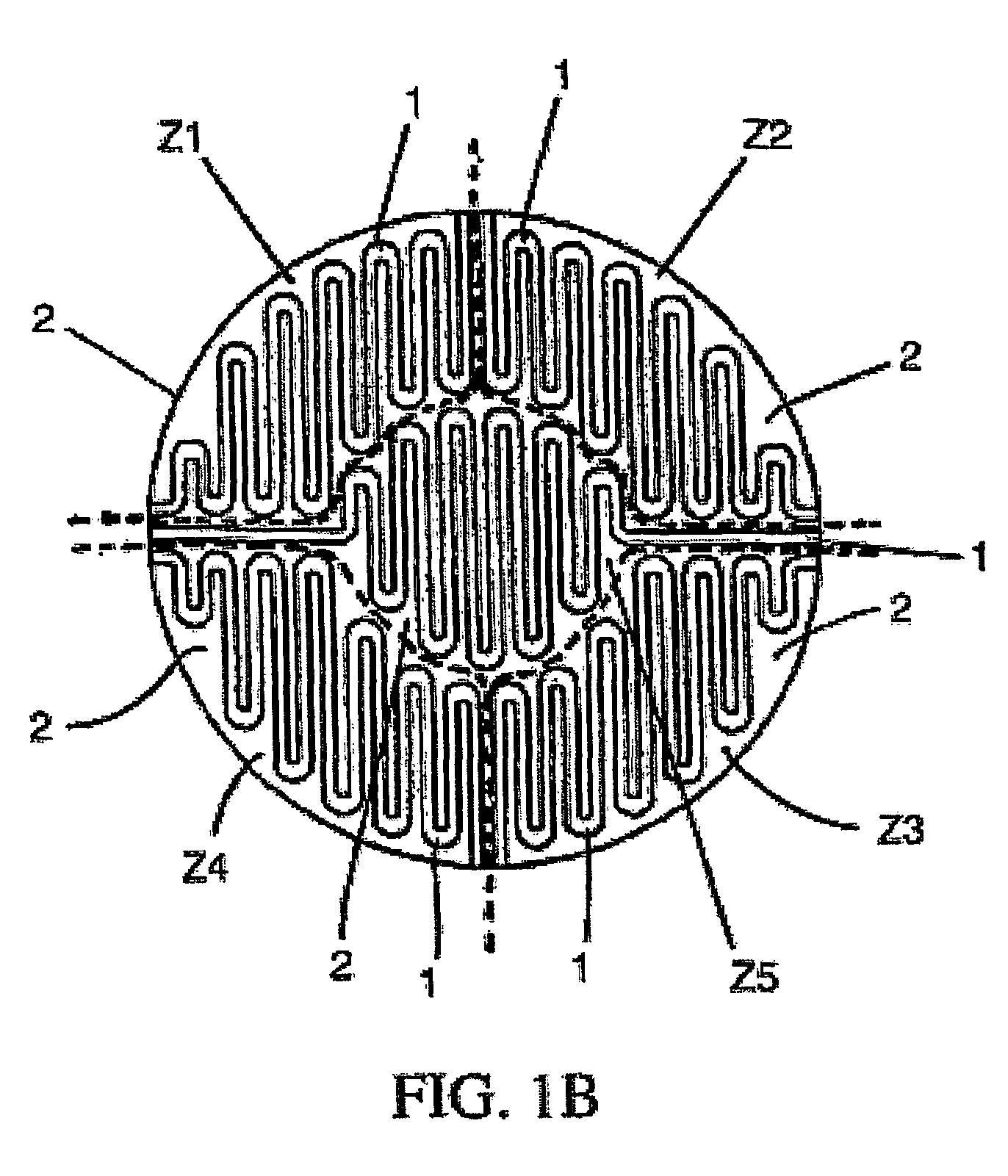Method of and structure for controlling electrode temperature
a technology of electrode temperature and structure, applied in the direction of coating, manufacturing tools, chemical vapor deposition coating, etc., can solve the problem of ameliorating non-uniform temperature, and achieve the effect of minimizing temperature non-uniformity
- Summary
- Abstract
- Description
- Claims
- Application Information
AI Technical Summary
Benefits of technology
Problems solved by technology
Method used
Image
Examples
first embodiment
[0027]Referring to the drawing figures, like reference numerals designate identical or corresponding parts throughout the several views. FIG. 1A illustrates the present invention, in which resistive heater elements 1 are embedded in a plate 2 (e.g., made of quartz, alumina or generally an electrically insulating material that has a low coefficient of thermal expansion and is compatible with an etch process). In turn, the plate 2 is inset in and affixed to an electrode housing 3. The electrode housing 3 is made of metal (e.g., aluminum) and it is machined with an inset to receive the plate 2. Furthermore, the outer edge of electrode housing 3 is machined with a slight convexity in order to be flush with the convexity of the bottom surface 3A of plate 2. As stated, the plate 2 is machined so that a bottom surface 3A thereof has a slight convexity (e.g., approximately 0.025 to 2 millimeters). An electrode 4 (e.g., an electrode of any of: silicon, anodized aluminum, carbon and silicon c...
second embodiment
[0039]Due to the inherent physics of silicon as a semiconductor wafer, and depending on the doping level of the electrode, this system would have an absolute upper limit of operation of 300 C. (575 K). the present invention may have an operability issue because of the inherent upper limit of the operating temperature being about 300 C. as a result of the physics of using a semiconductor as a heater. However, the 300 C. upper limit is above the normally desired operating temperature and therefore, should not be a limitation.
[0040]As in the first embodiment, electrical connection of the DC power supplies to the resistive heater elements 1 are provided. Wires (not shown) are passed through the RF transmission feed 7 of the upper electrode housing 3 to contacts 16 located adjacent to the surface in contact with the electrode 4 as shown in FIG. 6. The contacts 16 and wires (not shown) are insulated from the surrounding conducting structure via insulation 17. A bolt 18 connecting the elec...
PUM
| Property | Measurement | Unit |
|---|---|---|
| Thickness | aaaaa | aaaaa |
| Temperature | aaaaa | aaaaa |
| Thickness | aaaaa | aaaaa |
Abstract
Description
Claims
Application Information
 Login to View More
Login to View More - R&D
- Intellectual Property
- Life Sciences
- Materials
- Tech Scout
- Unparalleled Data Quality
- Higher Quality Content
- 60% Fewer Hallucinations
Browse by: Latest US Patents, China's latest patents, Technical Efficacy Thesaurus, Application Domain, Technology Topic, Popular Technical Reports.
© 2025 PatSnap. All rights reserved.Legal|Privacy policy|Modern Slavery Act Transparency Statement|Sitemap|About US| Contact US: help@patsnap.com



